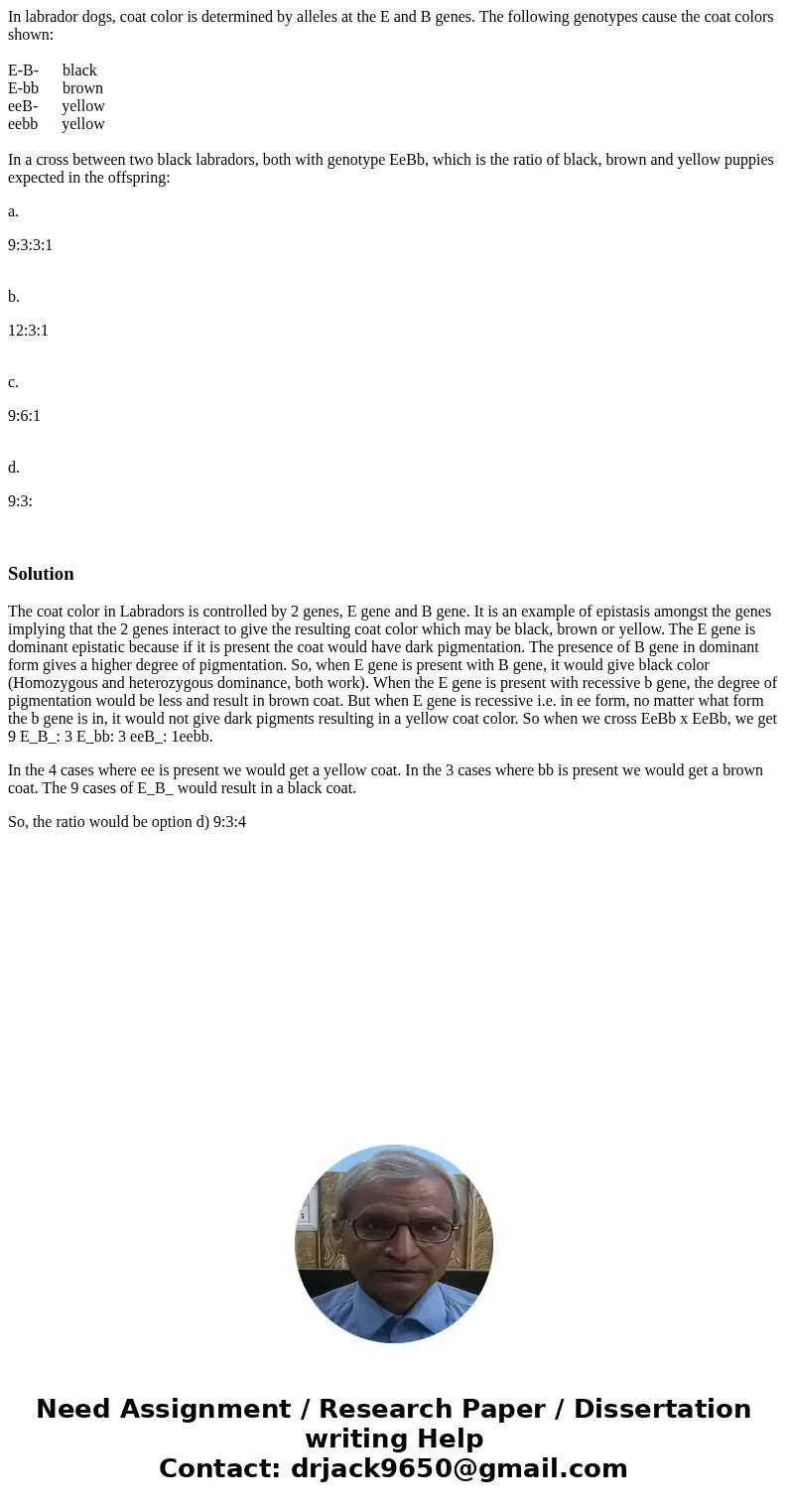In labrador dogs coat color is determined by alleles at the
In labrador dogs, coat color is determined by alleles at the E and B genes. The following genotypes cause the coat colors shown:
E-B- black
E-bb brown
eeB- yellow
eebb yellow
In a cross between two black labradors, both with genotype EeBb, which is the ratio of black, brown and yellow puppies expected in the offspring:
a.
9:3:3:1
b.
12:3:1
c.
9:6:1
d.
9:3:
Solution
The coat color in Labradors is controlled by 2 genes, E gene and B gene. It is an example of epistasis amongst the genes implying that the 2 genes interact to give the resulting coat color which may be black, brown or yellow. The E gene is dominant epistatic because if it is present the coat would have dark pigmentation. The presence of B gene in dominant form gives a higher degree of pigmentation. So, when E gene is present with B gene, it would give black color (Homozygous and heterozygous dominance, both work). When the E gene is present with recessive b gene, the degree of pigmentation would be less and result in brown coat. But when E gene is recessive i.e. in ee form, no matter what form the b gene is in, it would not give dark pigments resulting in a yellow coat color. So when we cross EeBb x EeBb, we get 9 E_B_: 3 E_bb: 3 eeB_: 1eebb.
In the 4 cases where ee is present we would get a yellow coat. In the 3 cases where bb is present we would get a brown coat. The 9 cases of E_B_ would result in a black coat.
So, the ratio would be option d) 9:3:4

 Homework Sourse
Homework Sourse